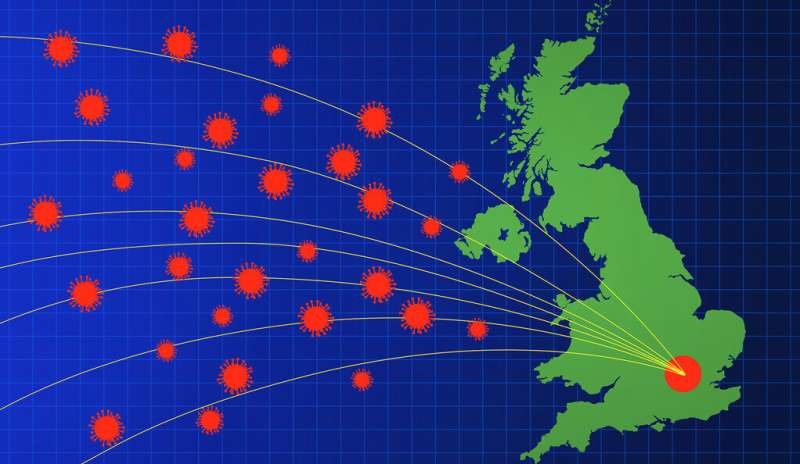t3 codeine side effects

Using data of incoming flights from the United Kingdom and other countries heavily affected by the SARS-CoV-2 B.1.1.7 variant, researchers at the Yale School of Public Health have for the first time reported the number of introductions and extent of variant spread belonging to this lineage in the United States.
The scientists used statistical modeling to predict that due to the high-passenger volumes in major American airports in New York, California, valtrex uk Florida, Texas, New Jersey, and Massachusetts, these states face the highest risks of importation of B.1.1.7 coming from the United Kingdom.
The authors identified at least 23 different sites where the variant was introduced and which led to a sustained community transmission across nine U.S. states by early March. The variant is now in all 50 states.
The B.1.1.7 variant, which is believed to be more transmissible and virulent than the original virus responsible for the pandemic, was found to be already established and spreading internally within the United States by December 2020. The researchers used advanced phylogeographic analysis of genomic data to generate their findings.
“Detecting new variants of concern before they become dominant is key to controlling this pandemic,” said Tara Alpert, a postdoctoral fellow at the Yale School of Public Health and the study’s lead author. “Surveillance on this scale requires extensive collaboration and partnership, and we are grateful for our team’s contributions.”
The findings are published recently in the journal Cell.
The researchers also used COVID-19 test data from nearby states (Connecticut, New York, New Jersey, and Illinois) to project the exponential increase of B.1.1.7 in U.S. states using a logistic growth model. As local and international travel continues, states that are less equipped with genomic surveillance capacity may not perceive the emergence and circulation of variants of concern.
The study’s results show that certain states need to significantly ramp up testing and genome sequencing to detect such variants before a surge begins.
This study required extensive cooperation among many labs within Yale and beyond for sample collection and sequencing as well as data aggregation and analysis.
“There was an urgency to release our results quickly to aid public health guidelines and initiatives in the most impactful way possible,” said Anderson Brito, also a lead author and a postdoctoral associate at the school.
As SARS-CoV-2 infects more people, mutations may lead to variants that are more transmissible, able to escape antibody neutralization, or be more virulent. The Yale research group is continuing to partner with the Centers for Disease Control and Prevention, as well as local health departments and hospitals, to monitor the emergence of variants.
Source: Read Full Article
